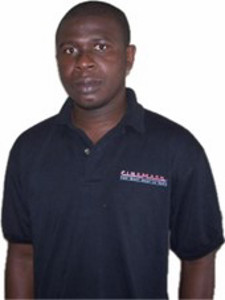OSE Dissertation Defense by Mr. Dominic Bosomtwi on Optical Responses of Hybrid Electromagnetic Nanostructures
Departmental News

Posted: May 6, 2024
Date: Thursday, May 9, 2024
Time: 1:30 PM MST
Location: ECE, Room 118
OSE Dissertation Committee:
Prof. Viktoriia Babicheva, Dissertation Committee Chair, UNM ECE
Distinguished Professor, Christos Christodoulou, UNM ECE
Dr. Emil Enache-Pommer, Intel Corporation
Prof. Terefe Habteyes, UNM Chemistry
Abstract:
Fano resonances arise from the strong coupling and interference between a broad background and a narrow, discrete state. This interaction produces asymmetric scattering profiles. Under precise conditions, destructive interference of strongly coupled modes can collapse the Fano resonance width, leading to bound states in the continuum (BICs). BICs localize light within a nanostructure while coexisting with radiating waves, yielding an infinitely high-quality factor (Q-factor).
This dissertation investigates the design of nanostructures featuring multilayer hybrid plasmonic-dielectric metasurfaces using full-wave numerical simulations. This design facilitates the excitation of multiple modes at plasmonic-dielectric interfaces. By meticulously adjusting nanoantenna dimensions, we achieve the formation of multiple Fano resonances, ultimately leading to the creation of multiple BICs.
Furthermore, the dissertation demonstrates how manipulating these Fano resonances leads to strong interactions, hybridizing the system's energy levels and forming new eigenstates. This hybridization manifests as Rabi splitting, where the original resonance peaks split into two distinct peaks, signifying the emergence of new eigenstates.
These advancements pave the way for groundbreaking developments in photonics and wave physics, enabling the creation of tunable devices, high-Q-factor resonators, broadband devices, optical filters, lasers, and various other photonic applications.
Finally, the dissertation explores a nanostructure design that enhances the generation of plasmonic hot electrons from periodically arranged gold nanoelectrodes. This periodic arrangement excites collective lattice resonances near Rayleigh anomalies (diffraction order transitions). The dissertation identifies the optimal lattice period for maximizing field enhancement and hot electron generation, which are subsequently injected into the surrounding water environment. This study offers valuable guidelines for designing plasmonic nanostructures with nanoelectrodes for hot electron injection into aqueous environments.
Biography:
Dominic Bosomtwi received his BSc in Physics from the University of Cape Coast in Cape Coast, Ghana, in 2002. He went on to obtain an MSc in Electrical Engineering from New Mexico State University in Las Cruces, NM, USA, in 2009, and another MSc in Optical Science & Engineering from the University of New Mexico in 2020. Dominic is currently a PhD student in Optical Science & Engineering at the University of New Mexico. His research focuses on the design and modeling of electromagnetic wave interactions with matter, including areas such as plasmonics, metamaterials, and metasurfaces. Additionally, Dominic also works as a process engineer at Intel Corporation. He will be joining Sandia National Laboratories as an electromagnetic analyst in May 2024.
His research focuses on the design and modeling of electromagnetic wave interactions with matter, including areas such as plasmonics, metamaterials, and metasurfaces.
Additionally, Dominic also works as a process engineer at Intel Corporation. He will be joining Sandia National Laboratories as an electromagnetic analyst in May 2024.
